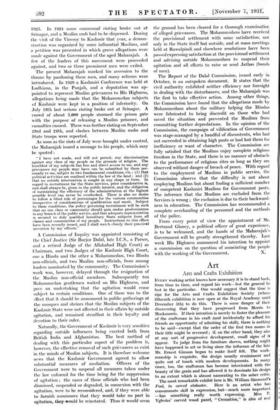Art
Arts and Crafts Exhibition
EVERY working artist knows how necessary it is to stand back, from time to time, and regard his work—lest the general be lost in the particular. One would suggest that the time is ripe for the Arts and Crafts Exhibition Society (whose fifteenth exhibition is now open at the Royal Academy until December 5th) to do this. There is some danger of their discovering that they have progressed from Morris to Moclunorris. If their intention is merely to foster the pleasure of the craftsman in his craft (and incidentally to afford his friends an opportunity of admiring his skill), there is nothing to be said—except that the order of the first two nouns in their title might be reversed ; if, on the other hand, they aim at any sort of progressive development, small signs of it appear. To judge from the furniture shown, nothing might have happened in art or living since the influence of the late Mr. Ernest Gimson began to make itself felt. The work- manship is exquisite, the design usually reminiscent and quite out of touch with modern developments. In many cases, too, the craftsman has become intoxicated with the beauty of the grain and has allowed it to dominate his design to an extent which is almost nauseating to the sober critic.
The most remarkable exhibit here is Mr. William Simmond's Foal, in carved alabaster. Here is an artist who has consummate skill in expression, but—much more important —has something really worth expressing. Miss Yglesias' carved wood panel, " Cremation," is also of real
decorative value. Of the other sections, those devoted to pottery and textiles are the least deserving of the foregoing strictures : both show real vitality. If our manufacturers are to find any mtich-needed inspiration in the present exhibition, it is here that they should look. One must also except much of the book production, since this includes fine works from the Shakespeare Head, the Golden Cockerel and the Ashendene Presses. Of their kind one could wish nothing better. For the rest, though it would be foolish to deny considerable merit in individual pieces—few of which can be dealt with in a notice of this length—one must regret that they do so little to belie the current interpretation of the















































 Previous page
Previous page